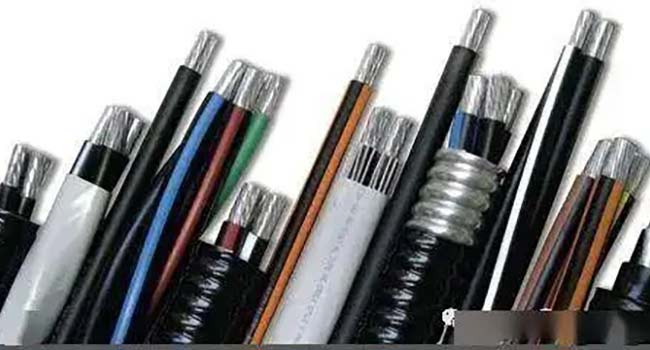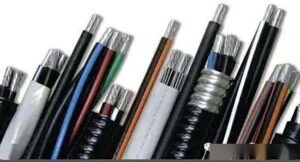

Kabel izolyasiyası hər hansı bir kabelin vacib hissəsidir. O, teli örtən qeyri-keçirici materialdan hazırlanmışdır. Elektrik izolyasiyası kimi də tanınır.
İzolyasiyanın məqsədi cərəyanı kabelin qalan hissəsindən ayırmaqdır, onu məftil içərisində saxlamaq və ətraf mühitə daxil olmasının qarşısını almaq.
Eyni vaxtda, izolyasiya teli quraşdırma mühitindəki sərt şərtlərdən qoruyur və onun düzgün işləməsini təmin edir.
İzolyasiya müxtəlif materiallardan hazırlana bilər, telin hədəf tətbiqindən asılı olaraq.
Amma ümumilikdə, plastik, rezin, və floropolimerlər məftil izolyasiyasının ən çox yayılmış növləridir.


Polivinil xlorid nəmə davamlıdır, yanğın, və aşınma və bir çox mühitdə istifadə edilə bilər. Misal üçün, turşu, məhəbbət, və ozon.
PVC izolyasiya edilmiş kabellər də zövq və ya qoxu yoxdur, buna görə zəhərli deyillər. Bu material üçün icazə verilən temperatur aralığı -55 ° C-dən 105 ° C-ə qədərdir.
SR-PVC oxşar müqavimət xüsusiyyətlərinə malikdir PVC izolyasiya, Abasam müqavimət prioritet olduqda bu material daha yaxşıdır.
Plenum PVC də PVC-dən hazırlanmışdır, Lakin hava dövranı olan daxili ərazilərdə quraşdırma üçün ən uyğun gəlir, məsələn, qaldırılmış mərtəbələr və ya düşmüş tavanlar kimi.
Polietilen, yüksək ötürmə sürətləri və aşağı kapasitans tələb olunduqda istifadə olunan sərt bir materialdır.
Polietilen də koaksial kabel izolyasiyası üçün üstünlük verilən seçimdir. Bu material lehiməyə davamlıdır, krekinq, və həlledicilər, -65 ° C və 80 ° C arasındakı temperaturda işləyir.
XLPE (çarpaz bağlı polietilen) İzolyasiya polietilen izolyasiyasının ümumi bir alt hissəsidir.
PP-nin oxşar xüsusiyyətlərinə malikdir, lakin əsasən qapalı mühitlərdə istifadə olunur. Bu izolyasiya üçün icazə verilən temperatur aralığı 30 ° C-dən 80 ° C-ə qədərdir.
Pur, əsasən aşağı temperatur və dəniz mühitində kabellər üçün istifadə olunan çevik bir materialdır. Nəmə davamlıdır, kimyəvi maddələr, və aşınma və 60 ° C-dən 90 ° C-ə qədər bir əməliyyat temperaturu var.
TPR yüksək temperatur və sərt hava şəraitinə və yüksək emal sürəti tələb olunduqda ən yaxşı seçimdir.
Neopren aşınmaya davamlıdır, yağ, və həlledicilər. Bu izolyasiya materialları telləri davamlı edir.
EPR is widely used in high-voltage cables – it is flexible and resistant to most irritants. EPR kabel izolyasiyası üçün icazə verilən temperatur aralığı -50 ° C-dən 160 ° C-ə qədərdir.
Epdm sərt hava şəraitinə qarşı davamlıdır, istilik və aşınma, həm də güclü bir dielektrik və çevik olmaq. Onun işləmə temperaturu aralığı -55 ° C-dir- 50 ° C-ə qədər.
Silikon geniş istifadə olunan çevik sintetikdir rezin izolyasiya materialı. Bu material, 180 ° C-ə qədər olan temperaturdan yapışa biləcəyi üçün yüksək istilik sahələrində xüsusilə faydalıdır.
Şüşə lif nəm və kimyəvi maddələrə davamlıdır.
Bu şüşə izolyasiyasının maksimum işləmə temperaturu 482 ° C və tez-tez sobada istifadə olunur, alüminium emalı, və istilik müalicəsi.
SBR neopren üçün oxşar xüsusiyyətlərə malikdir, lakin əsasən Mil-C-55668 kabelində istifadə olunur.
PFA möhkəmdir və, buna görə də, Həddindən artıq temperaturda istifadə edilə bilən davamlı izolyasiya materialı (-65 ° C-dən 250 ° C-ə qədər).
Politetrafluoroetilen, istilik olan çevik bir termoplastik materialdır, yağ, rütubət, və kimyəvi davamlı.
Bu material üçün icazə verilən temperatur aralığı -70 ° C-dən 205 ° C-ə qədərdir.
Fep, adətən yüksək alov müqavimətinə və əla məlumat ötürmə qabiliyyətinə görə gödəkçələrdə və hərbi kabellərdə istifadə olunur.
PVDF is also known as Kynar – it is resistant to most irritants, alov da daxil olmaqla. Ayrıca çevik və ağır deyil, bu havadar qapalı mühit üçün yaxşı uyğunlaşır.
Seçdiyiniz izolyasiya növü kabelinizin tətbiq ssenarisindən asılıdır. At Veri kabellər, Alüminium və mis dirijor izolyasiyası olan müxtəlif növ kabellərimiz var. Misal üçün, Ən populyar məhsullarımızın bəziləri pvc izolyasiya ilə aşağı gərginlikli alüminium tellərdir və mis orta və yüksək gərginlikli kabellər XLPE izolyasiyası ilə. Ən son kataloqumuzu əldə etmək üçün bizimlə əlaqə saxlayın, Daha çox məhsula baxın və layihəniz üçün lazım olan tel və kabel tapın.
İnsanlar mineral izolyasiya edilmiş kabel termini eşitdikdə, many immediately think of harsh environments like…
Telekommunikasiya şəbəkələri və enerji ötürücü sistemləri sürətlə böyüyür, the demand for reliable and cost-effective…
Güclü neft və qaz layihələrində, Sənaye kabelləri yalnız aksesuar deyil—they are the "nervous…
Elektrik bağlantıları dünyasında, kabel qapaqları—Kabel qulaqları və ya kabel terminalları kimi də tanınır—var…
Elektrik mühəndisliyi layihəsi üçün düzgün rezin kabel seçərkən, it is critical to…
Əziz tərəfdaşlar və müştərilər: 29 yanvar, 2025 Çin Aysal Yeni ilidir – Spring…